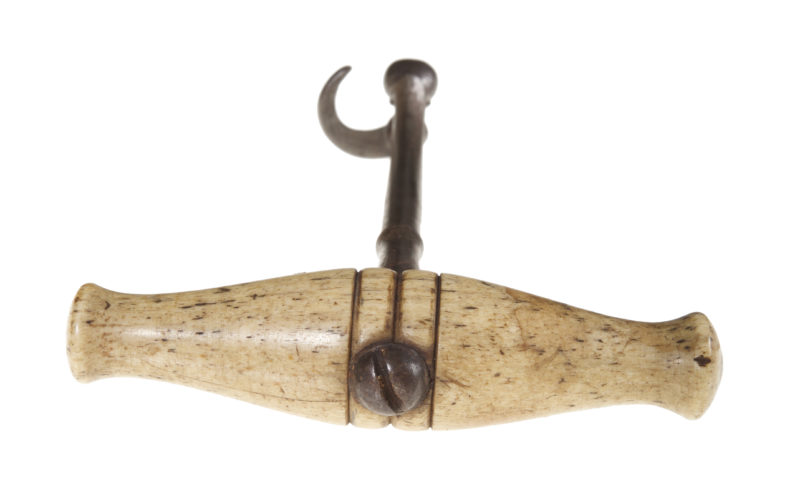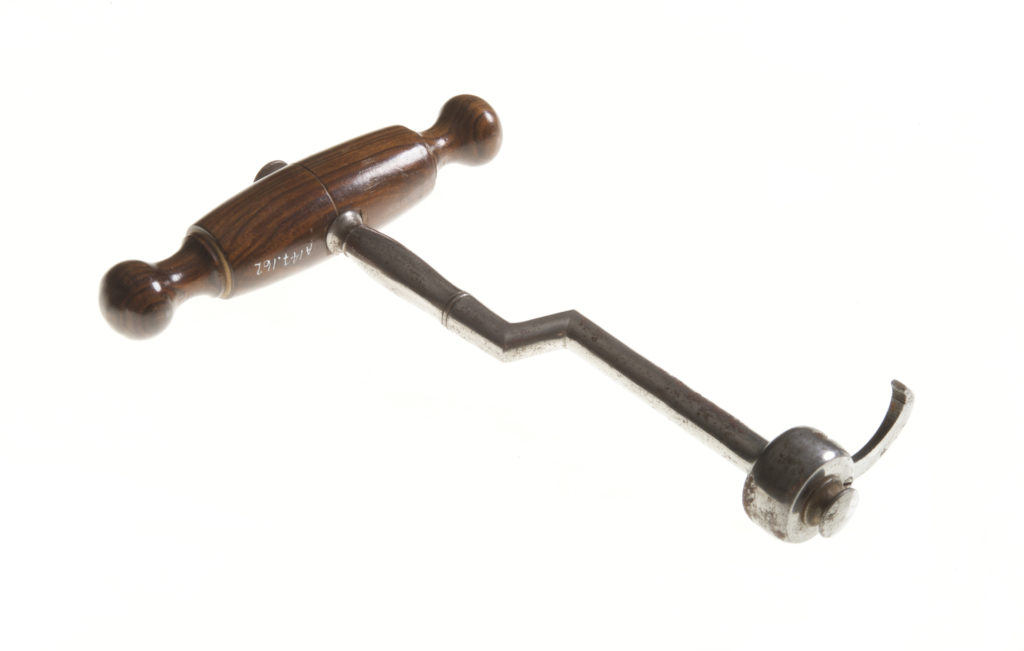Key with Claw attached to Circular Bolster
The bolster, acting as the pivot, could cause significant damage to adjacent gums, teeth and bone during a forceful key extraction. Wrapping the bolster in a soft piece of linen or leather was advisable. With an aim towards minimizing injury, a variety of bolster shapes and sizes appeared, and some were movable. The earliest designs were deep and flat, and, in 1798, the bolster’s deficiency was attributed to its excessive depth, which raised the tooth in too high an arc and not in the desired perpendicular direction. Oval, barrel-shaped, cylindrical, pear-shaped, circular, egg-shaped, spherical, bullet-shaped, concave, and saddle-shaped were tried during the 100-year quest to design the elusive innocuous bolster!
Explore this item in the slideshow below.




